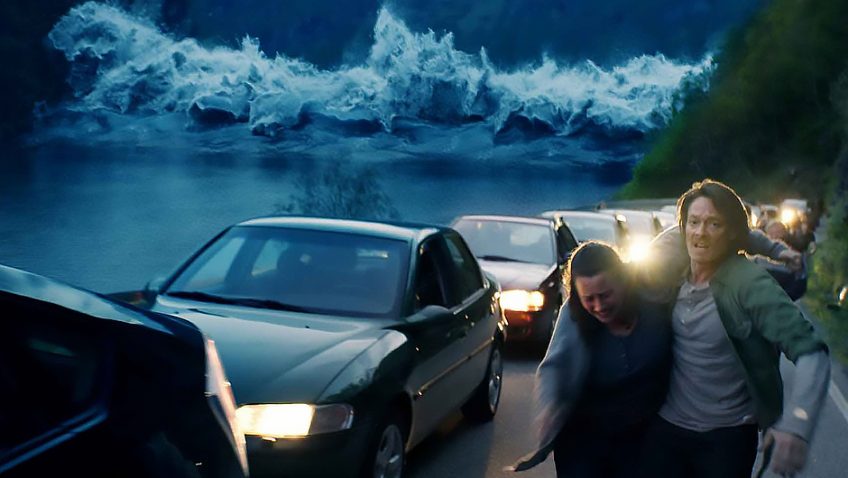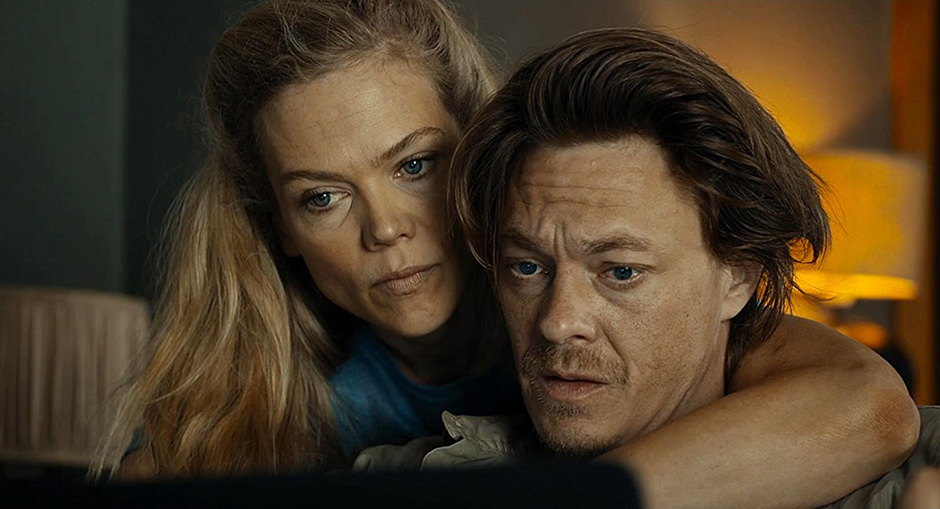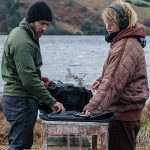Joyce Glasser reviews The Wave (August 12, 2016) Cert 15, 103 min.
The Wave (Bølgen) is a disaster movie with a difference. Despite being scary and grim in equal measure, it’s an old-fashioned, resourceful-family-in-peril film that is also a lot of fun to watch. Made with a Norwegian cast and crew by Norwegian director Roar Uthaug, the film cost a fraction of the budget of a typical Hollywood disaster movie. Yet The Wave
is so convincing that you might be crossing the town of Geiranger off your holiday itinerary despite its spectacular scenery.
From the start we are left in no doubt that this disaster-in-waiting could really happen to any of us. In fact, the film is based on real experiences. The price Norway pays for its magnificent fjords is the threat of rockslides. There are around 300 registered unstable mountainsides in the country whose cracks are constantly measured by geologists. The largest crack is at Akerneset just next to Geiranger where the film was shot.
The film opens with archival photographs and footage documenting historic rockslides. In April, 1934, part of a mountain collapsed into the fjord creating a 62-meter wave that killed 40 people on the shore of the town of Tafjord. In 1905 a tsunami laid waste to another town, killing 60. The question the news reader asks is not if it will happen again but, when it does, will the inhabitants have time to escape? That question becomes all the more important to us as we get to know some of the residents of Geiranger and live through harrowing events with them.
Ruggedly good-looking Kristian (Kristoffer Joner) is a 40-something-year-old geologist who has been working at a high-tech early warning centre near Geiranger. He is not only the perfect man for the job, but he is the perfect husband, neighbour and, for the purposes of the story, the perfect hero. If Kristian seems too good to be true, just about everything else in this movie feels very real.
Kristian lives in a rustic cottage on the fjord with his pretty wife Idun (Ane Dahl Torp), a duty manager of the town’s tourist hotel, and their two children: teenage son Sondre (Jonas Hoff Oftebro) and daughter Julia (Edith Haagenrud-Sande) around nine. When we first meet Idun she is under the sink in their small kitchen fixing the plumbing, which suggests the kind of woman she is.
Kristian has been offered a more challenging new job that he has accepted half-heartedly as it will involve moving to a flat in the city away from the fjord. As he goes into work for the last time for a departure party, he takes a last look at the monitors that measure the movements of the mountain. Kristian, a diligent and dedicated detail man, becomes concerned. Something strange is happening. He takes the helicopter to the Eagles Nest Control Station to investigate. Much to Kristian’s annoyance, his colleagues dismiss his concerns. The readings they are accustomed to go by are looking normal. The cracks are not expanding.
It is not until Kristian is sitting in his car waiting for the ferry to begin the move to their new flat that he gets an epiphany and instantly leaves the queue. Pouring over his English-language logs and technical books, he realises what is happening.
By now, his colleagues believe him and are ready to sound the red alert. Kristian, with Julia at the cottage that he will never see again, is separated from Idun, who is working at the hotel where Sondre has gone to meet her. We are with them when they learn that they have ten minutes before the wave sweeps over Geiranger.
One of the pleasures of the film is the long and impressively technical build up to the main action during which the tension mounts in an equally impressive manner. But it is the actual scenes of the disaster that are the most thrilling and the family’s efforts to survive and find one another are nail-bitingly suspenseful. Hats off to the production design team and to cinematographer John Christian Rosenlund, who captures the dizzying heights of the mountains, the dystopian aftermath in the town and the claustrophobic basement of the hotel with equal skill.
In his Director’s Statement, Uthaug says that he wanted ‘to bring the traditional Hollywood genre closer to home.’ His efforts to downsize the overblown genre succeeds in a big way.
You can watch the film trailer here:






